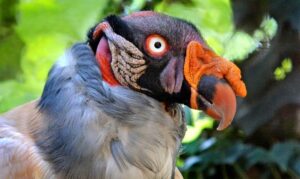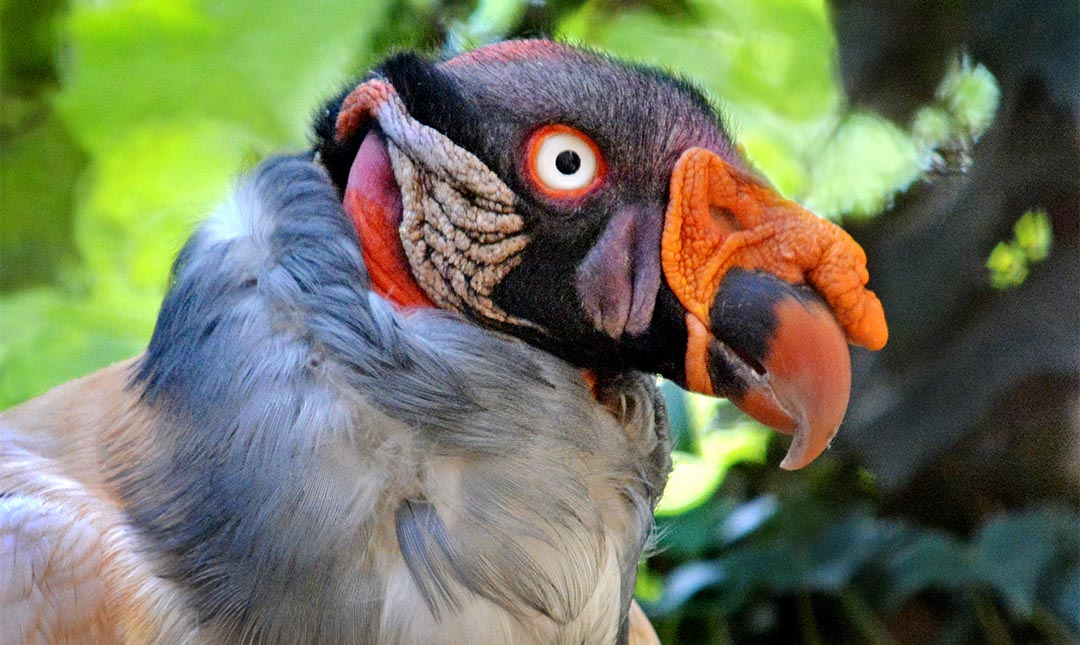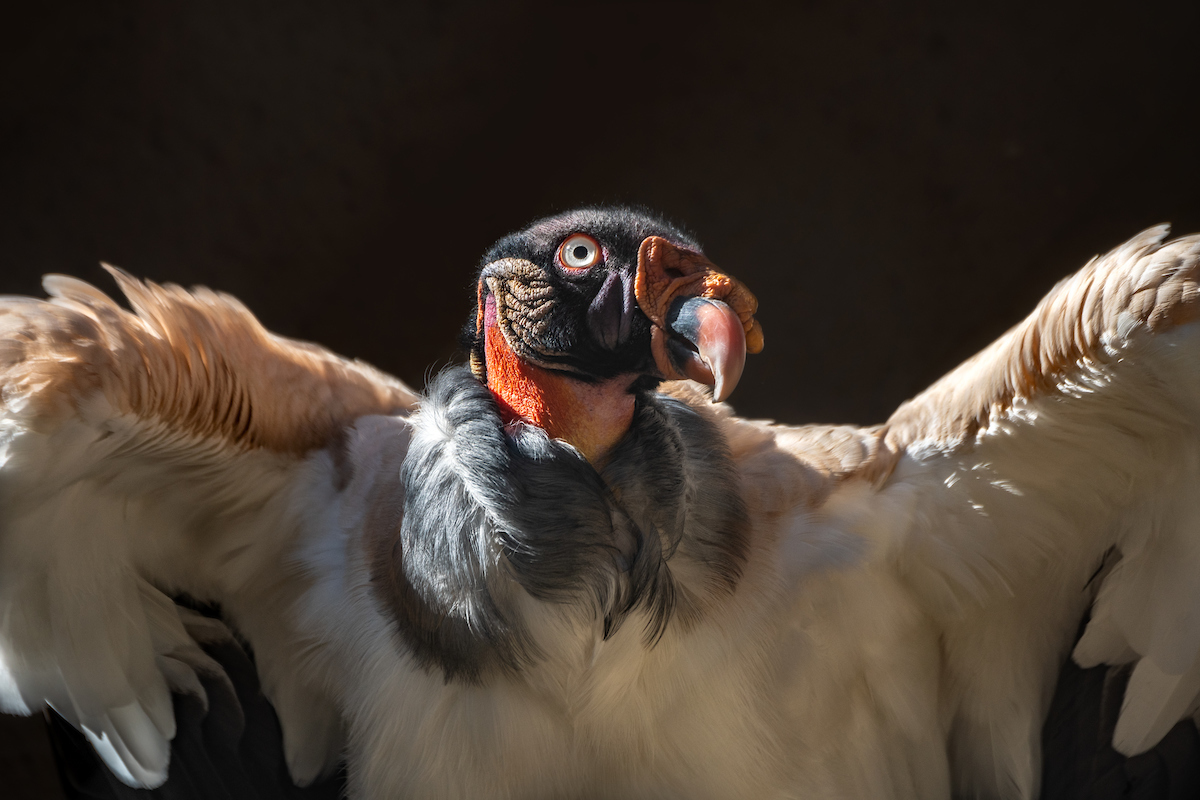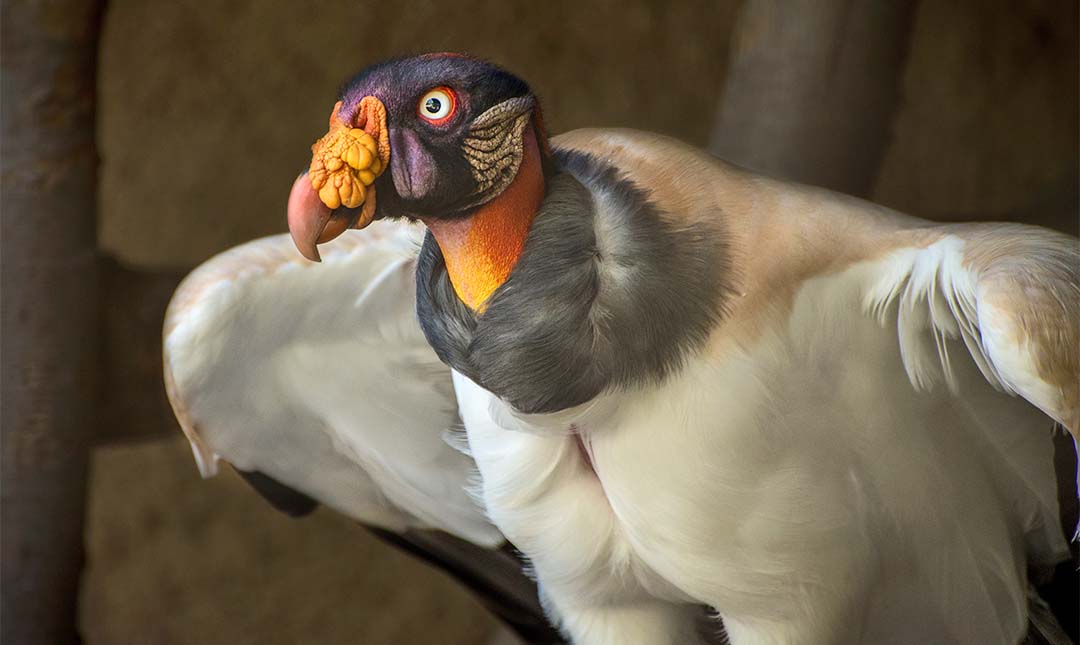About
What does it take to become king among vultures? A unique skill set and connections to the gods. King vultures have unique beaks that specialize in ripping through tough-skinned carcasses. When these kings arrive on the scene, smaller vultures make way, allowing them to tear open the carrion and eat first. This gives other vultures access to the nutritious internal organs.
The heads and necks of vultures are featherless, making it easier to keep these areas clean. Strong stomach acids destroy lethal bacteria and break down bone. King vultures find potential meals by relying on their keen eyesight or by following turkey vultures who (unlike king vultures) have an excellent sense of smell. The king vulture is one of the most common animal images in Mayan hieroglyphics. The Mayans saw the king vulture as a messenger between humans and the gods. It was sometimes depicted as a god itself with the head of a bird and the body of a human.



Habitat
King vultures are residents of dense, tropical forests (or nearby savannas and grasslands) ranging from southern Mexico into northern Argentina.
Diet
King vultures are scavengers, meaning they feed on dead animals (carrion). In human care, they are fed a diet of rats, chicken, and raw meat.
Physical Characteristics
Among the most vibrant vultures, king vultures’ bright colors are important in courtship displays and may help these birds recognize one another. King vultures are about 2.5 feet tall, weigh up to ten pounds, and have a wingspan of about six feet. Lifespan in the wild is unknown, but in human care, they can live 30 years.
LOCATION WITHIN THE ZOO
You’ll find this bird in the South America section. See Zoo Map.



